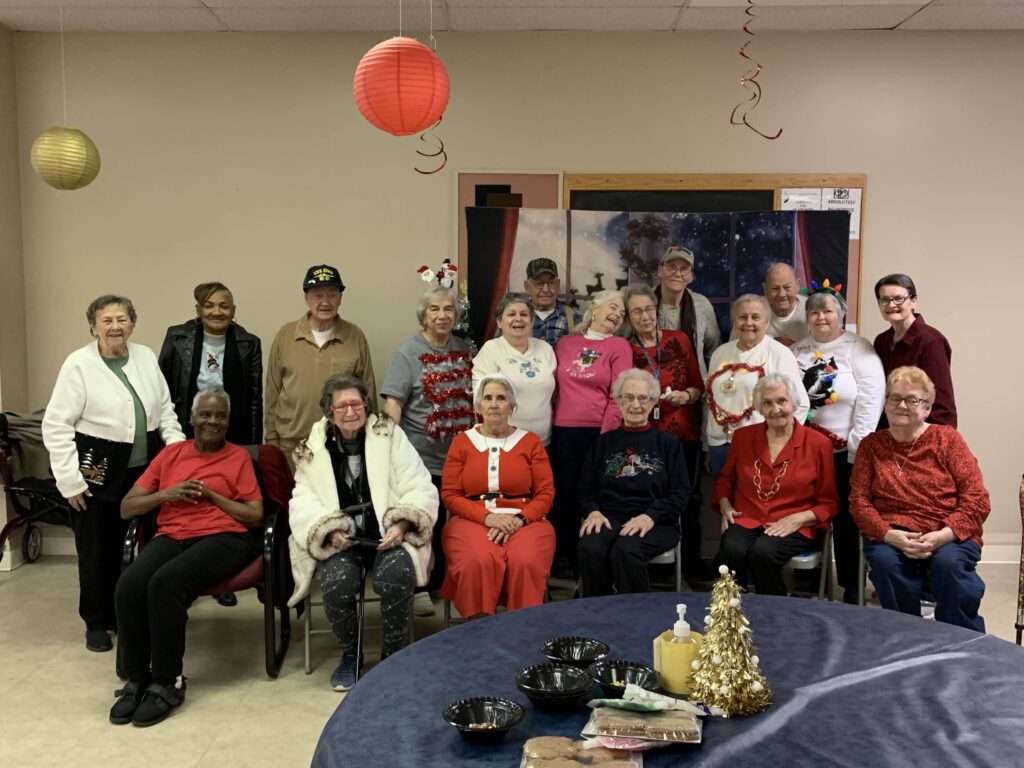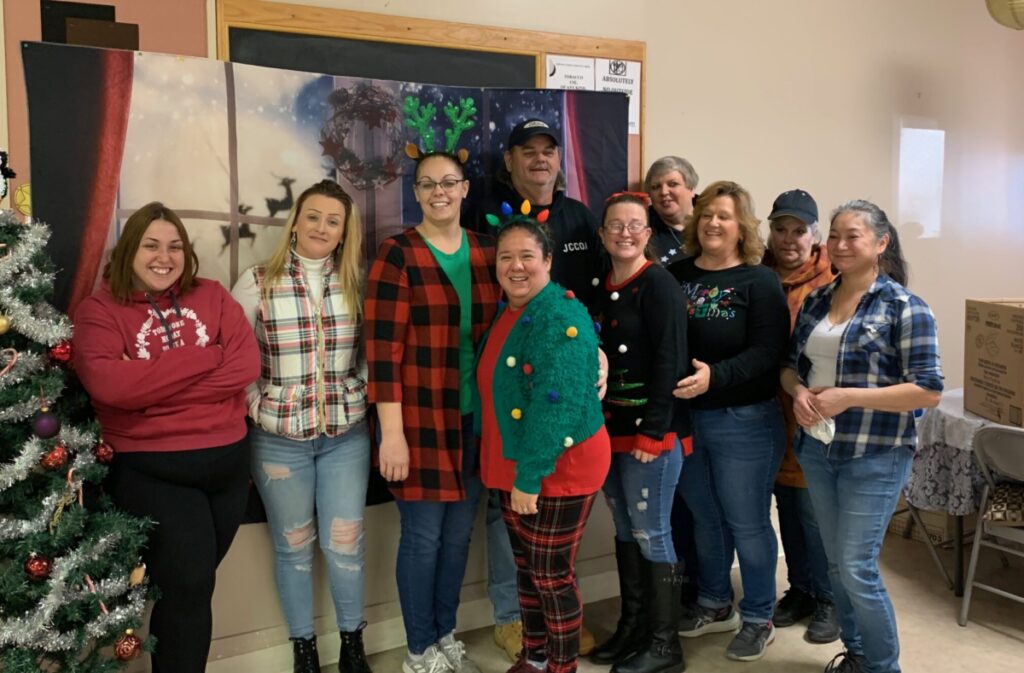Note: This article was originally published in the Spirit of Jefferson on December 21, 2022. It is the second part of a two-part column dedicated to the growing population of seniors in the county. You can read the first article in the post Seniors SAILing Along.
Becoming a senior citizen, going into one’s “golden years” can come as a relief to some: a relief from bad bosses, early rising, parental responsibilities. It can also be a time to look forward: to travel, warm winters, leisure, neglected hobbies. But then there’s the other side. The senior years can come with a decline in income, decreasing physical mobility, greater susceptibility to aches and pains. There are other negatives too, but let’s leave those for later.
So like probably every other stage of life there are trade-offs, pluses and minuses associated. And the balance between having more or less of one or the other comes down to how many of the good things you can afford and how many of the bad things you can avoid. To listen to the advice of financial people, it’s a matter of saving enough while you work in order to weight the balance to the favorable side. It’s not just money, though. It’s family, friends, home, and community that are just, or maybe more, important.
Part of the community’s role in realizing a satisfying retirement for its citizens rests with the services that churches, social organizations, parks, and infrastructure provide. In a previous column, I mentioned the designation that Shepherdstown worked to achieve as an age-friendly city and the role of a senior-led member organization, Shepherdstown Area Independent Living, in providing opportunities for seniors to age in place.
Jefferson County as a whole, I would say, scores well on being good to its seniors in all of these concerns, but there is still the concern as to whether seniors have the money and opportunity to take full advantage of what the community provides. This is the question of accessibility and opportunity. These two concerns ultimately cycle down to the question of affordability. Does every individual senior have the money needed to take advantage of what the community offers?
For instance, does a senior have the means by car or public transportation to get to the places where services are offered? Do they have the funds to afford fees for using facilities or attending events? Can they afford eating out or entertaining in?
Historically seniors have been an impoverished group of people, largely because they lose their source of income when they retire and have to live on fixed incomes. Here again we hear the insistent voices of the financial planners and bankers who have been telling us for all our earning years to save, save, save. That, as many of us know, is easier said than done when you have to worry about exorbitant rents and mortgages, college loans, minimum wages, a complex safety net for necessities like medical care. So it’s not hard to understand that many seniors make it to 65 without having saved enough.
We as the American public since the time of the Great Depression in the 1930’s have understood the need and the possibility that, even if you have saved your whole life, downturns in the economy can wipe those savings out. The unfairness of life’s curveballs, prodded the Roosevelt administration to pass the Social Security Act, which provided some insurance against dire poverty in the last years of life. The act still survives today, but it only barely provides a reliable safeguard against poverty.
Social Security was not established to serve as a sole source of a retired person’s income. It’s a common point of folk wisdom among seniors that you can’t rely on Social Security alone. The AARP denies this, but says: “It’s not recommended to rely solely on Social Security benefits in retirement, but it can be done.” The association estimates that one out of five married and two out of five single retirees get 90 percent of their income from Social Security.
What makes it difficult to live on Social Security alone is that the monthly dollars an individual receives from it are tied to how long they worked and how much they earned while working. If that individual hasn’t paid off their home mortgage or lives in a rental property, there’s not likely enough in that one monthly check to cover all their living expenses. The alternative often involves having to downgrade or move to a cheaper location.
Besides Social Security the other main source of retirement income comes from Individual Retirement Accounts (IRAs) and 401(k) plans, the second basically a joint employer-employee contribution plan that gradually did away with many pension plans. So according to the Census Bureau’s Survey of Income and Program Participation in 2017 49 percent of individuals between the ages of 55 and 66 had no savings from these or other programs, such as bank savings accounts.
Also, since seniors live in increasingly frail bodies as they continue to age, medical expenses take a bigger and bigger bite out of what income they do have. As a result of the expensive biological certainty of aging, the Johnson administration in 1965 passed the Medicare and Medicaid law, setting up a government subsidized plan for seniors to help pay for medical expenses. The details are complicated, but no one gets entirely free, unrestricted medical services. Most provisions of the plan require participants, other than those who are completely disabled, to dish out a monthly insurance payment that can be deducted from their Social Security allowance. But just about all seniors agree that, at a time when medical expenses go up faster than inflation, Medicare is a blessing.
In addition to these entitlement programs providing income and subsidized medical services, in 1965, the Johnson administration also passed the Older Americans Act, which set up and expanded over the years a comprehensive network of social services aimed at seniors. One of the major provisions of the law,through its several amendments, was to establish in each state a government led program dealing with senior issues. In West Virginia this agency is called the Bureau of Senior Services (BOSS). BOSS, in turn, has set up Area Agencies on Aging (AAAs) in several geographic areas of the state to deal with services at the county level.
In Jefferson County this organization is the Jefferson County Council on Aging (JCCOA), headquartered in Ranson. Its counterpart in Berkeley County is Berkeley Senior Services in Martinsburg. It is these programs that provide the lifeline for those many seniors in the county who lack savings with which to manage their aging lives.
The intent of all these levels of bureaucracy is to better assure those seniors who voluntarily take advantage of them that they can rely on service providers for the essentials of living as they choose to continue in their own homes; that is, for transportation when needed, nutrition, socialization, legal protection, and home care. Each of these services JCCOA arranges for or provides to individual seniors either directly in their homes or through the Anna Mae Reedy Senior Center in Ranson.

The last of these program objectives, home care, has become increasingly important. It is often tied to the expressed desire of the majority of seniors (77 percent according to AARP data) to be able to stay safely and securely in their own homes, as long as that remains feasible. Former county commissioner Lyn Widmyer has put online a video blog (lynwidmyer.net) in which she interviews local seniors who have made the decision to age in their homes. These individuals speak to the strength of their attachments to their homes. They’re the places where they find their comfort and where their connection to the past resides. Homes are both emotional anchors, as well as evidence of seniors’ viability.
But aging in place does require continuing responsibilities for seniors to manage their own home care or rely on outside resources, which importantly can include the services provided through JCCOA. Its programs for transportation, in-home care, and respite care for caregivers of Alzheimer’s patients are fee based, where the fee to the client is determined by means-testing, or ability to pay. Some services range from as little as $1.50 an hour to a maximum of $18.00 an hour per client. It should be understood that the equivalent services provided by private sector firms can be as high as three times the state subsidized maximum rates.
Other services that JCCOA provides, such as in-home meal delivery and so-called congregant or ‘get-together’ meals at the Council’s facility are reimbursed by state funds. At present prepared meals can be delivered into five different communities in the county. Likewise, outreach and advisory services and adult recreational day care are paid for with state funds. Overall the entire JCCOA budget is approximately $1.5 million, two-thirds of which come from client fees and the remainder from state grants and donations.
Amy Wellman, the director of JCCOA, who provided the operational details reported above, stressed that the mission objectives of the organization are largely determined by eligibility requirements and reimbursement rates set by the state’s Bureau on Aging, which in turn is subject to Federal government regulations set by the Medicare and Medicaid agencies. During the COVID pandemic years, the agency had to curtail many of its congregant services, which led necessarily to having to lay off staff. This put a burden on the remaining staff (38 full and part-time employees) to provide services for the increased numbers of clients who became isolated because of the virus and then, once restrictions were lifted, to ramp up the congregant services. They are still operating flat out and understaffed, such that there is a waiting list now for in-home services.

A personal note now. I’ve made the observation above that seniors in the county are on the whole well served. In this article and the preceding one which focused on SAIL, an essentially volunteer run organization providing services through volunteers, we have two different models providing parallel, though not exactly equivalent, services.
Both organizations, however, are guided by similar mission statements, that is, of keeping people in their homes. The biggest difference is that JCCOA through its subsidies can provide in-home and daily nutrition services that SAIL cannot and it can serve more individuals than can SAIL.
Both groups require contributions to keep the organizations running: from its clients, in JCCOA’s case, and from its members, in SAIL’s case. SAIL has lower expenses than JCCOA, but individuals probably pay more per year total than do JCCOA clients. This likely puts SAIL out of reach of some seniors, though Betty Snyder on the current SAIL board is tasked with trying to reduce this cost barrier and to diversify the membership. On the other hand, SAIL, because its efforts are substantially focused on community engagement, takes on an advocacy role for seniors that is beyond JCCOA’s government funded mission. This perhaps gives SAIL members more opportunities to get involved in community affairs. The long and short of this comparison and contrast of two different models of community caring for and by seniors is that the two organizations have effective programs and practices that they can share with one another.
Similar Posts:
- None Found